| [1] |
Améglio, T., Bodet, C., Lacointe, A., Cochard, H., 2002. Winter embolism, mechanisms of xylem hydraulic conductivity recovery and springtime growth patterns in walnut and peach trees. Tree Physiol. 22, 1211-1220. .
|
| [2] |
Amico Roxas, A., Orozco, J., Guzmán-Delgado, P., Zwieniecki, M.A., 2021. Spring phenology is affected by fall non-structural carbohydrate concentration and winter sugar redistribution in three Mediterranean nut tree species. Tree Physiol. 41, 1425-1438. .
|
| [3] |
Arora, R., Taulavuori, K., 2016. Increased risk of freeze damage in woody perennials vis-à-vis climate change: importance of deacclimation and dormancy response. Front. Plant Sci. 4, 44. https://doi.org/0.3389/fenvs.2016.00044.
|
| [4] |
Augspurger, C.K., 2009. Spring 2007 warmth and frost: phenology, damage and refoliation in a temperate deciduous forest. Funct. Ecol. 23, 1031-1039. .
|
| [5] |
Augspurger, C.K., 2013. Reconstructing patterns of temperature, phenology, and frost damage over 124 years: spring damage risk is increasing. Ecology 94, 41-50. .
|
| [6] |
Baas, P., Wheeler, E.A., 2011. Wood anatomy and climate change. In: Hodkinson, T.R., Jones, M.B., Waldren, S., Parnell, J.A.N. (Eds.), Climate change, ecology and systematics. Cambridge University Press, Cambridge, pp. 141–155.
|
| [7] |
Beeckman, H., 2016. Wood anatomy and trait-based ecology. IAWA J. 37, 127-151. .
|
| [8] |
Castagneri, D., Carrer, M., Regev, L., Boaretto, E., 2020. Precipitation variability differently affects radial growth, xylem traits and ring porosity of three Mediterranean oak species at xeric and mesic sites. Sci. Total Environ. 699, 134285. .
|
| [9] |
Chabot, B.F., Hicks, D.J., 1982. The ecology of leaf life spans. Annu. Rev. Ecol. Evol. Syst. 13, 229-259. .
|
| [10] |
Chamberlain, C.J., Wolkovich, E.M., 2021. Late spring freezes coupled with warming winters alter temperate tree phenology and growth. New Phytol. 231, 987-995. .
|
| [11] |
Charrier, G., Ngao, J., Saudreau, M., Améglio, T., 2015. Effects of environmental factors and management practices on microclimate, winter physiology, and frost resistance in trees. Front. Plant Sci. 6, 259. .
|
| [12] |
Christensen-Dalsgaard, K.K., Tyree, M.T., 2014. Frost fatigue and spring recovery of xylem vessels in three diffuse-porous trees in situ. Plant Cell Environ. 37, 1074-1085. .
|
| [13] |
Chuine, I., 2010. Why does phenology drive species distribution? Philos. Trans. R. Soc. B Biol. Sci. 365, 3149-3160. .
|
| [14] |
Chuine, I., Beaubien, E.G., 2001. Phenology is a major determinant of tree species range. Ecol. Lett. 4, 500-510. .
|
| [15] |
Cochard, H., Lemoine, D., Améglio, T., Granier, A., 2001. Mechanisms of xylem recovery from winter embolism in Fagus sylvatica. Tree Physiol. 21, 27-33. .
|
| [16] |
Cochard, H., Tyree, M.T., 1990. Xylem dysfunction in Quercus: vessel size, tyloses, cavitation and seasonal changes in embolism. Tree Physiol. 6, 393-407. .
|
| [17] |
Dai, Y.X., Wang, L., Wan, X.C., 2020. Frost fatigue and its spring recovery of xylem conduits in ring-porous, diffuse-porous, and coniferous species in situ. Plant Physiol. Biochem. 146, 177-186. .
|
| [18] |
Davis, S.D., Sperry, J.S., Hacke, U.G., 1999. The relationship between xylem conduit diameter and cavitation caused by freezing. Am. J. Bot. 86, 1367-1372. .
|
| [19] |
Deng, G.R., Zhang, H.Y., Yang, L.B., Zhao, J.J., Guo, X.Y., Hong, Y., Wu, R.H., Dan, G., 2020. Estimating frost during growing season and its impact on the velocity of vegetation greenup and withering in Northeast China. Rem. Sens. 12, 1355. .
|
| [20] |
D'Orangeville, L., Itter, M., Dan, K., Munger, J.W., Richardson, A.D., Dyer, J.M., Orwig, D.A., Pan, Y., Pederson, N., 2021. Peak radial growth of diffuse-porous species occurs during periods of lower water availability than for ring-porous and coniferous trees. Tree Physiol. 42, 304-316. .
|
| [21] |
Evert, R.F., 2006. Esau’s Plant Anatomy: meristems, cells and tissues of the plant body: their structure, function and development, third ed. John Wiley & Sons, Inc., Hoboken.
|
| [22] |
Ewers, F.W., Fisher, J.B., 1989. Techniques for measuring vessel lengths and diameters in stems of woody plants. Am. J. Bot. 76, 645-656. .
|
| [23] |
Feild, T.S., Brodribb, T., 2001. Stem water transport and freeze-thaw xylem embolism in conifers and angiosperms in a Tasmanian treeline heath. Oecologia 127, 314-320. .
|
| [24] |
García-González, I., Fonti, P., 2006. Selecting earlywood vessels to maximize their environmental signal. Tree Physiol. 26, 1289-1296. .
|
| [25] |
Ge, Q.S., Wang, H.J., Rutishauser, T., Dai, J.H., 2015. Phenological response to climate change in China: a meta-analysis. Global Change Biol. 21, 265-274. .
|
| [26] |
Gordo, O., Sanz, J., 2005. Phenology and climate change: a long-term study in a Mediterranean locality. Oecologia 146, 484-495. .
|
| [27] |
Granda, E., Scoffoni, C., Rubio-Casal, A.E., Sack, L., Valladares, F., 2014. Leaf and stem physiological responses to summer and winter extremes of woody species across temperate ecosystems. Oikos 123, 1281-1290. .
|
| [28] |
Gričar, J., Vedenik, A., Skoberne, G., Hafner, P., Prislan, P., 2020. Timeline of leaf and cambial phenology in relation to development of initial conduits in xylem and phloem in three coexisting sub-Mediterranean deciduous tree species. Forests 11, 1104. .
|
| [29] |
Gu, L.H., Hanson, P.J., Post, W.M., Kaiser, D.P., Yang, B., Nemani, R., Pallardy, S.G., Meyers, T., 2008. The 2007 Eastern US spring freeze: increased cold damage in a warming world? Bioscience 58, 253-262. .
|
| [30] |
Guada, G., Vázquez-Ruiz, R.A., García-González, I., 2019. Response patterns of xylem and leaf phenology to temperature at the southwestern distribution boundary of Quercus robur: a multi-spatial study. Agric. For. Meteorol. 269–270, 46-56. .
|
| [31] |
Hacke, U.G., Sauter, J.J., 1996. Xylem dysfunction during winter and recovery of hydraulic conductivity in diffuse-porous and ring-porous trees. Oecologia 105, 435-439. .
|
| [32] |
Hacke, U.G., Sperry, J.S., 2001. Functional and ecological xylem anatomy. Perspect. Plant Ecol. Evol. Systemat. 4, 97-115. .
|
| [33] |
Hänninen, H., 2016. Boreal and temperate trees in a changing climate. Springer, Dordrecht.
|
| [34] |
Hao, G.Y., Wheeler, J.K., Holbrook, N.M., Goldstein, G., 2013. Investigating xylem embolism formation, refilling and water storage in tree trunks using frequency domain reflectometry. J. Exp. Bot. 64, 2321-2332. .
|
| [35] |
Hasenauer, H., Nemani, R.R., Schadauer, K., Running, S.W., 1999. Forest growth response to changing climate between 1961 and 1990 in Austria. For. Ecol. Manag. 122, 209-219. .
|
| [36] |
Hoffmann, W.A., Marchin, R.M., Abit, P., Lau, O.L., 2011. Hydraulic failure and tree dieback are associated with high wood density in a temperate forest under extreme drought. Global Change Biol. 17, 2731-2742. .
|
| [37] |
Hölttä, T., Vesala, T., Perämäki, M., Nikinmaa, E., 2002. Relationships between embolism, stem water tension, and diameter changes. J. Theor. Biol. 7, 23-38. .
|
| [38] |
Jiménez-Castillo, M., Lusk, C.H., 2013. Vascular performance of woody plants in a temperate rain forest: lianas suffer higher levels of freeze-thaw embolism than associated trees. Funct. Ecol. 27, 403-412. .
|
| [39] |
Kollas, C., Korner, C., Randin, C.F., 2014. Spring frost and growing season length co-control the cold range limits of broad-leaved trees. J. Biogeogr. 41, 773-783. .
|
| [40] |
Lechowicz, M.J., 1984. Why do temperate deciduous trees leaf out at different times? Adaptation and ecology of forest communities. Am. Nat. 124, 821-842. .
|
| [41] |
Lenz, A., Hoch, G., Vitasse, Y., Körner, C., 2013. European deciduous trees exhibit similar safety margins against damage by spring freeze events along elevational gradients. New Phytol. 200, 1166-1175. .
|
| [42] |
Lockhart, J.A., 1983. Optimum growth initiation time for shoot buds of deciduous plants in a temperate forest. Oecologia 60, 34-37. .
|
| [43] |
Lopez, O.R., Farris-Lopez, K., Montgomery, R.A., Givnish, T.J., 2008. Leaf phenology in relation to canopy closure in southern Appalachian trees. Am. J. Bot. 95, 1395-1407. .
|
| [44] |
Ma, T., Zhou, C., 2012. Climate-associated changes in spring plant phenology in China. Int. J. Biometeorol. 56, 269-275. .
|
| [45] |
Marchin, R.M., Salk, C.F., Hoffmann, W.A., Dunn, R.R., 2015. Temperature alone does not explain phenological variation of diverse temperate plants under experimental warming. Global Change Biol. 21, 3138-3151. .
|
| [46] |
Mayr, S., Sperry, J.S., 2010. Freeze-thaw-induced embolism in Pinus contorta: centrifuge experiments validate the 'thaw-expansion hypothesis' but conflict with ultrasonic emission data. New Phytol. 185, 1016-1024. .
|
| [47] |
Meinzer, F.C., 2002. Co-ordination of vapour and liquid phase water transport properties in plants. Plant Cell Environ. 25, 265-274. .
|
| [48] |
Mu, C.Y., Ji, R.P., Zhou, X.Y., Zhang, J., Song, X.W., Li, S., Gao, T., Zhang, Y., 2018. Temporal and spatial characteristics of the first and the last dates of frost and frostless periods in Shenyang during 1960-2016. J. Arid Meteorol. 36, 290-294. .
|
| [49] |
Muffler, L., Beierkuhnlein, C., Aas, G., Jentsch, A., Schweiger, A.H., Zohner, C., Kreyling, J., 2016. Distribution ranges and spring phenology explain late frost sensitivity in 170 woody plants from the Northern Hemisphere. Global Ecol. Biogeogr. 25, 1061-1071. .
|
| [50] |
Myneni, R.B., Keeling, C.D., Tucker, C.J., Asrar, G., Nemani, R.R., 1997. Increased plant growth in the northern high latitudes from 1981 to 1991. Nature 386, 698-702. .
|
| [51] |
Neuner, G., 2007. Frost resistance at the upper timberline. In: Wieser, G., Tausz, M. (Eds.), Trees at their upper limit. Springer, Dordrecht, pp. 171–180.
|
| [52] |
Neuner, G., 2014. Frost resistance in alpine woody plants. Front. Plant Sci. 5, 654. .
|
| [53] |
Niu, C.Y., Meinzer, F.C., Hao, G.Y., 2017. Divergence in strategies for coping with winter embolism among co-occurring temperate tree species: the role of positive xylem pressure, wood type and tree stature. Funct. Ecol. 31, 1550-1560. .
|
| [54] |
Panchen, Z.A., Primack, R.B., Nordt, B., Ellwood, E.R., Stevens, A.D., Renner, S.S., Willis, C.G., Fahey, R., Whittemore, A., Du, Y.J., Davis, C.C., 2014. Leaf out times of temperate woody plants are related to phylogeny, deciduousness, growth habit and wood anatomy. New Phytol. 203, 1208-1219. .
|
| [55] |
Perrin, M., Rossi, S., Isabel, N., 2017. Synchronisms between bud and cambium phenology in black spruce: early-flushing provenances exhibit early xylem formation. Tree Physiol. 37, 593-603. .
|
| [56] |
Piao, S.L., Liu, Q., Chen, A.P., Janssens, I.A., Fu, Y.S., Dai, J.H., Liu, L.L., Lian, X., Shen, M.G., Zhu, X.L., 2019. Plant phenology and global climate change: current progresses and challenges. Global Change Biol. 25, 1922-1940. .
|
| [57] |
Pittermann, J., 2010. The evolution of water transport in plants: an integrated approach. Geobiology 8, 112-139. .
|
| [58] |
Pittermann, J., Sperry, J.S., 2006. Analysis of freeze-thaw embolism in conifers. The interaction between cavitation pressure and tracheid size. Plant Physiol. 140, 374-382. .
|
| [59] |
Reich, P.B., Cornelissen, H., 2014. The world-wide 'fast-slow' plant economics spectrum: a traits manifesto. J. Ecol. 102, 275-301. .
|
| [60] |
Root, T.L., Price, J.T., Hall, K.R., Schneider, S.H., Rosenzweig, C., Pounds, J.A., 2003. Fingerprints of global warming on wild animals and plants. Nature 421, 57-60. .
|
| [61] |
Savage, J.A., Chuine, I., 2021. Coordination of spring vascular and organ phenology in deciduous angiosperms growing in seasonally cold climates. New Phytol. 230, 1700-1715. .
|
| [62] |
Saxe, H., Cannell, M.G.R., Johnsen, O., Ryan, M.G., Vourlitis, G., 2001. Tree and forest functioning in relation to global warming. New Phytol. 149, 369-400. .
|
| [63] |
Secchi, F., Zwieniecki, M.A., 2011. Sensing embolism in xylem vessels: the role of sucrose as a trigger for refilling. Plant Cell Environ. 34, 514-524. .
|
| [64] |
Sperry, J.S., Nichols, K.L., Sullivan, J.E.M., Eastlack, S.E., 1994. Xylem embolism in ring-porous, diffuse-porous and coniferous trees of northern Utah and interior Alaska. Ecology 75, 1736-1752. .
|
| [65] |
Sperry, J.S., Sullivan, J.E., 1992. Xylem embolism in response to freeze-thaw cycles and water stress in ring-porous, diffuse-porous, and conifer species. Plant Physiol. 100, 605-613. .
|
| [66] |
Sterck, F.J., Martínez-Vilalta, J., Mencuccini, M., Cochard, H., Gerrits, P., Zweifel, R., Herrero, A., Korhonen, J.F., Llorens, P., Nikinmaa, E., Nolè, A., Poyatos, P., Ripullone, F., Sass-Klaassen, U., 2012. Understanding trait interactions and their impacts on growth in Scots pine branches across Europe. Funct. Ecol. 26, 541-549. .
|
| [67] |
Takahashi, S., Okada, N., Nobuchi, T., 2013. Relationship between the timing of vessel formation and leaf phenology in ten ring-porous and diffuse-porous deciduous tree species. Ecol. Res. 28, 615-624. .
|
| [68] |
Takahashi, S., Takahashi, E., 2016. Timing of vessel formation in twigs and trunks in relation to porosity and leaf flushing. IAWA J. 37, 16-27. .
|
| [69] |
Taneda, H., Sperry, J.S., 2008. A case-study of water transport in co-occurring ring-versus diffuse-porous trees: contrasts in water-status, conducting capacity, cavitation and vessel refilling. Tree Physiol. 28, 1641-1651. .
|
| [70] |
Umebayashi, T., Fukuda, K., 2018. Seasonal changes in the occurrence of embolisms among broad-leaved trees in a temperate region. Botany 96, 873-881. .
|
| [71] |
Umebayashi, T., Utsumi, Y., Koga, S., Inoue, S., Fujikawa, S., Arakawa, K., Matsumura, J., Oda, K., 2008. Conducting pathways in north temperate deciduous broadleaved trees. IAWA J. 29, 247-263. .
|
| [72] |
Vitasse, Y., Delzon, S., Dufrene, E., Pontailler, J.Y., Louvet, J.M., Kremer, A., Michale, R., 2009. Leaf phenology sensitivity to temperature in European trees: do within-species populations exhibit similar responses? Agric. For. Meteorol. 149, 735-744. .
|
| [73] |
Vitasse, Y., Lenz, A., Hoch, G., Körner, C., 2014a. Earlier leaf-out rather than difference in freezing resistance puts juvenile trees at greater risk of damage than adult trees. J. Ecol. 102, 981-988. .
|
| [74] |
Vitasse, Y., Lenz, A., Körner, C., 2014b. The interaction between freezing tolerance and phenology in temperate deciduous trees. Front. Plant Sci. 5, 541. .
|
| [75] |
Vitra, A., Lenz, A., Vitasse, Y., 2017. Frost hardening and dehardening potential in temperate trees from winter to budburst. New Phytol. 216, 113-123. .
|
| [76] |
Wang, J., Ives, N.E., Lechowicz, M.J., 1992. The relation of foliar phenology to xylem embolism in trees. Funct. Ecol. 6, 469-475. .
|
| [77] |
Wilner, J., 1960. Relative and absolute electrolytic conductance tests for frost hardiness of apple varieties. Can. J. Plant Sci. 40, 630-637. .
|
| [78] |
Wang, Z., Xu, J.L., Wei, H.X., 2015. Spring frost following warm spell and its effect on the growth of the trees in spring. Northern Hortic. 16, 195-201. .
|
| [79] |
Xu, H.Y., Wang, H., Prentice, I.C., Harrison, S.P., Wright I.J., 2021. Coordination of plant hydraulic and photosynthetic traits: confronting optimality theory with field measurements. New Phytol. 232, 1286-1296. .
|
| [80] |
Xu, S., Xu, W., Chen, W., He, X., Huang, Y., Wen, H., 2014. Leaf phonological characters of main tree species in urban forest of Shenyang. PLoS One 9, e99277. .
|
| [81] |
Yang, D., Wang, A.Y., Zhang, J.L., Bradshaw, C.J.A., Hao, G.Y., 2020. Variation in stem xylem traits is related to differentiation of upper limits of tree species along an elevational gradient. Forests 11, 349. .
|
| [82] |
Yang, D., Zhang, Y.J., Song, J., Niu, C.Y., Hao, G.Y., 2019. Compound leaves are associated with high hydraulic conductance and photosynthetic capacity: evidence from trees in Northeast China. Tree Physiol. 39, 729-739. .
|
| [83] |
Yin, X.H., Hao, G.Y., Sterck, F., 2022. A trade-off between growth and hydraulic resilience against freezing leads to divergent adaptations among temperate tree species. Funct. Ecol. 36, 739-750. .
|
| [84] |
Yin, X.H., Sterck, F., Hao, G.Y., 2018. Divergent hydraulic strategies to cope with freezing in co-occurring temperate tree species with special reference to root and stem pressure generation. New Phytol. 219, 530-541. .
|
| [85] |
Yu, R., Schwartz, M.D., Donnelly, A., Liang, L., 2016. An observation-based progression modeling approach to spring and autumn deciduous tree phenology. Int. J. Biometeorol. 60, 335-349. .
|
| [86] |
Zhang, J.L., Cao, K.F., 2009. Stem hydraulics mediates leaf water status, carbon gain, nutrient use efficiencies and plant growth rates across dipterocarp species. Funct. Ecol. 23, 658-667. .
|
| [87] |
Zhang, Y.J., Bucci, S.J., Arias, N.S., Scholz, F.G., Hao, G.Y., Cao, K.F., Goldstein, G., 2016. Freezing resistance in Patagonian woody shrubs: the role of cell wall elasticity and stem vessel size. Tree Physiol. 36, 1007-1018. .
|
| [88] |
Zhao, J., Wang, Y., Zhang, Z., Zhang, H., Guo, X., Yu, S., Du, W., Huang, F., 2016. The variations of land surface phenology in Northeast China and its responses to climate change from 1982 to 2013. Rem. Sens. 8, 400. .
|
| [89] |
Zimmermann, M.H., 1983. Xylem Structure and the Ascent of Sap, first ed. Springer, Berlin.
|













 DownLoad:
DownLoad:
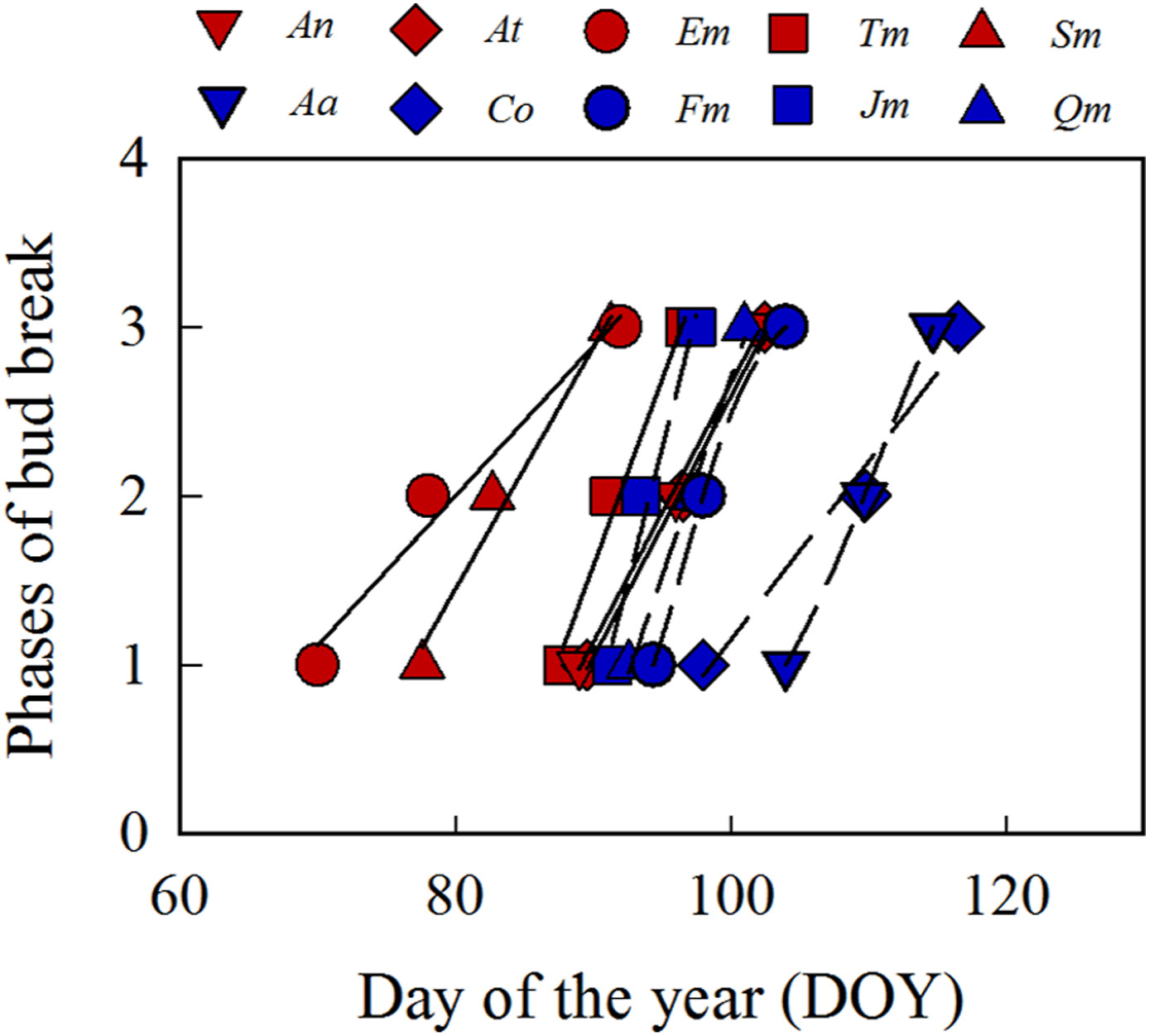
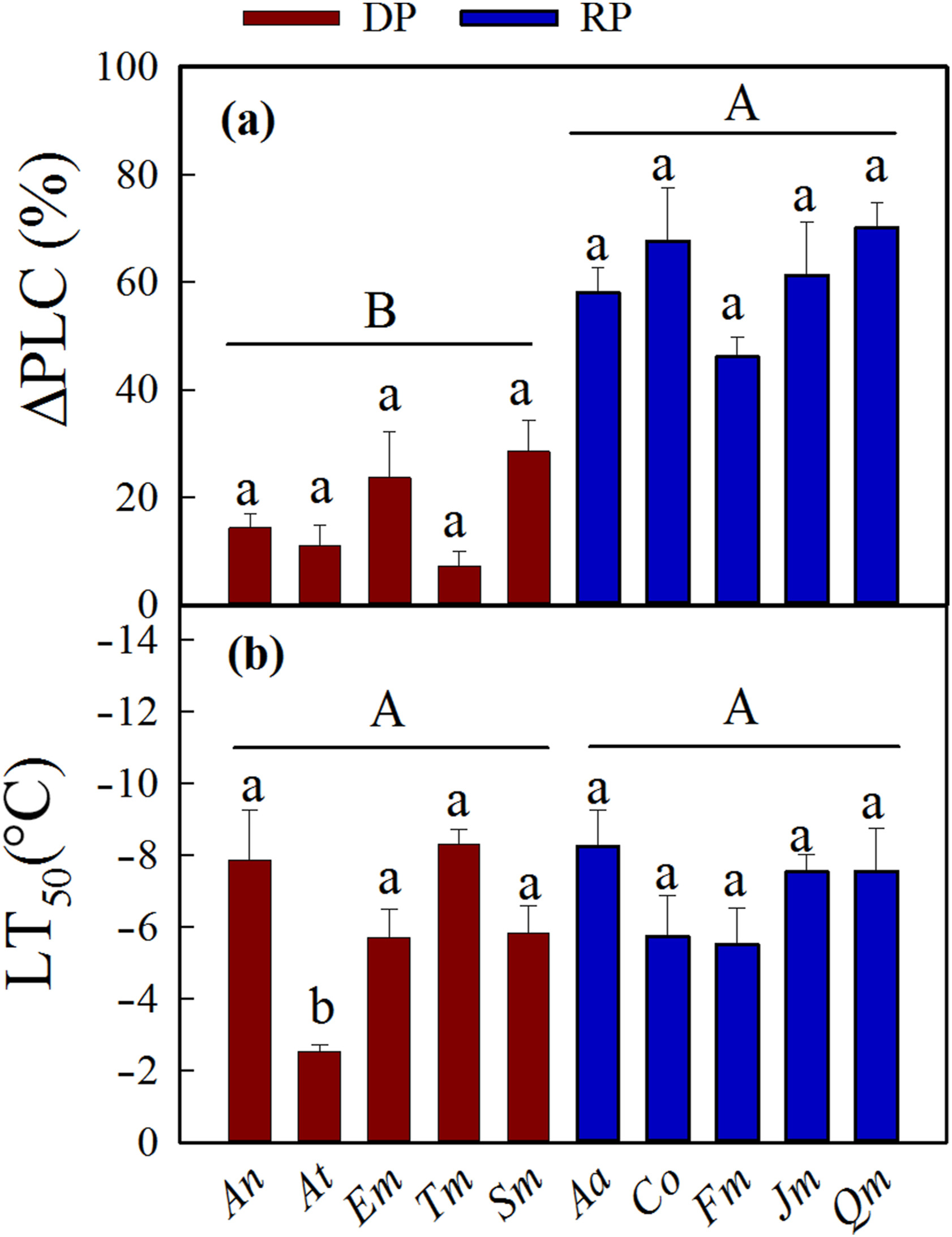
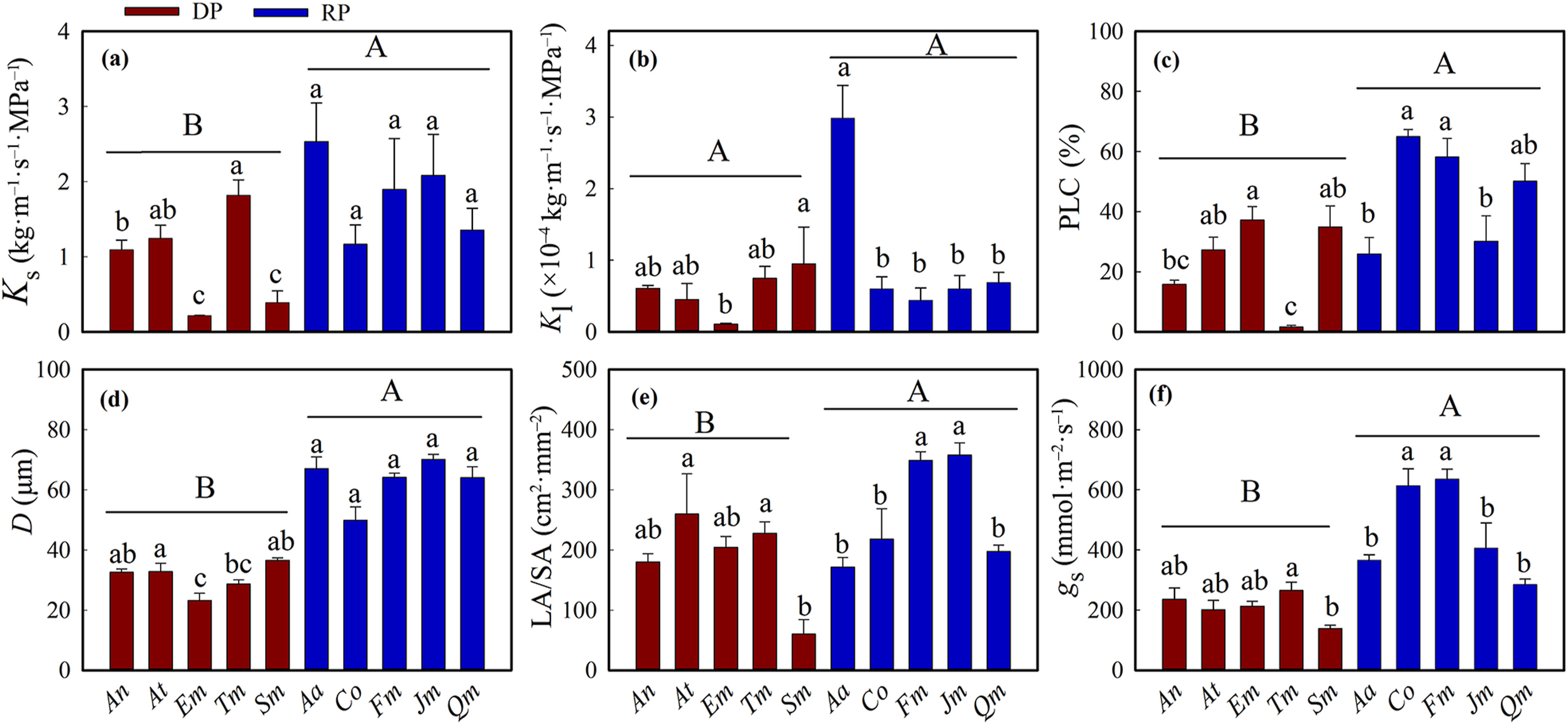
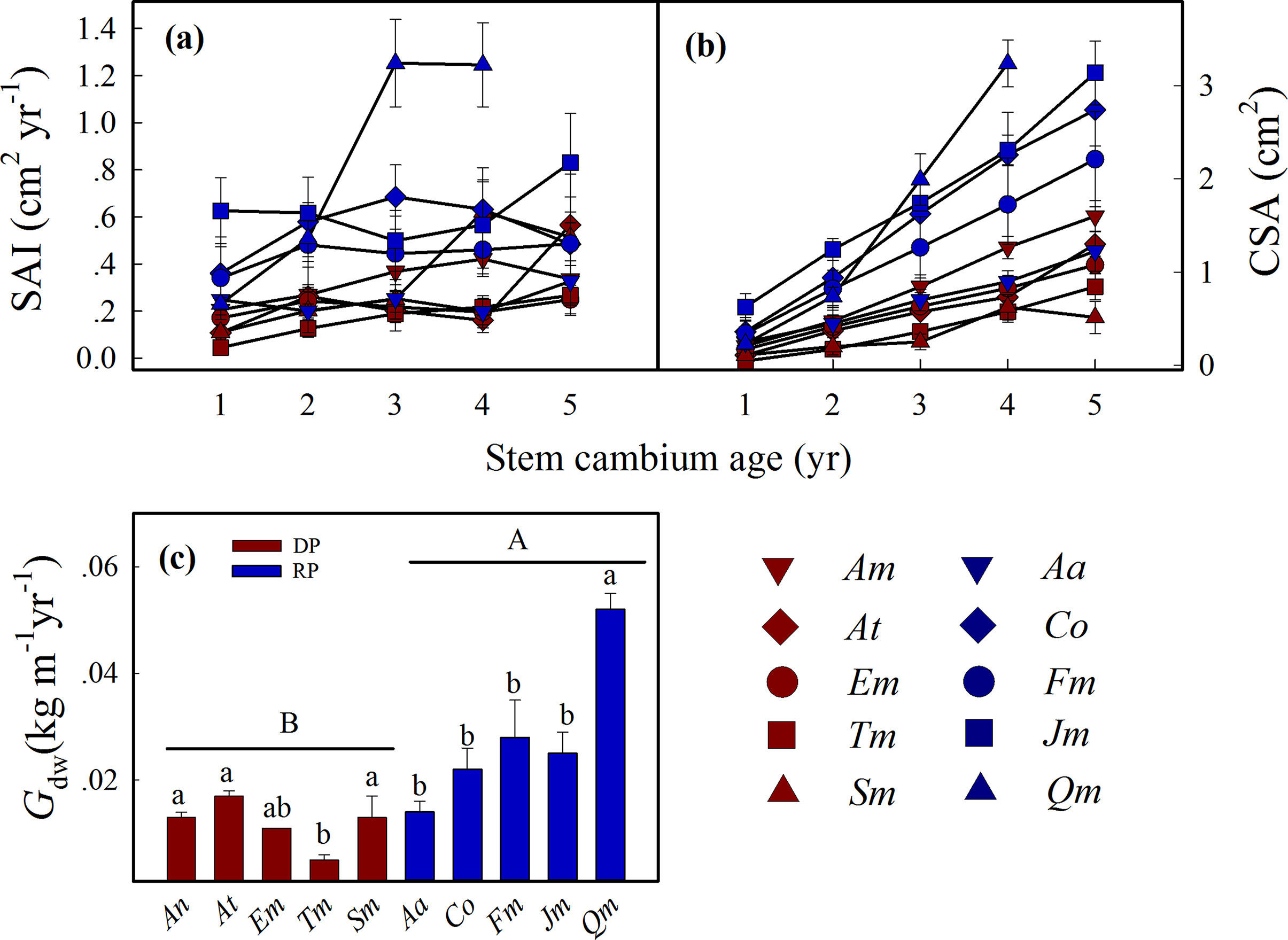
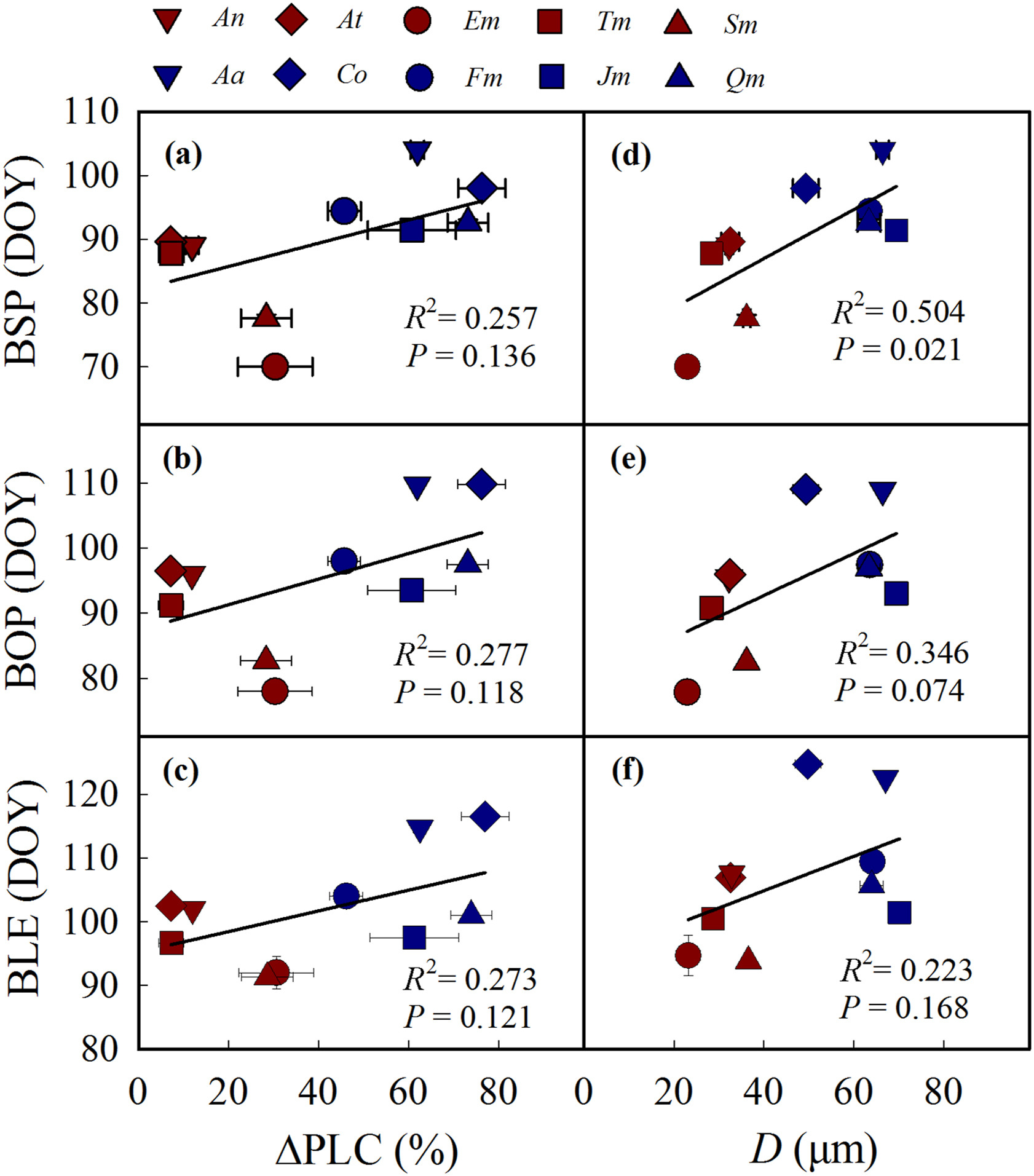
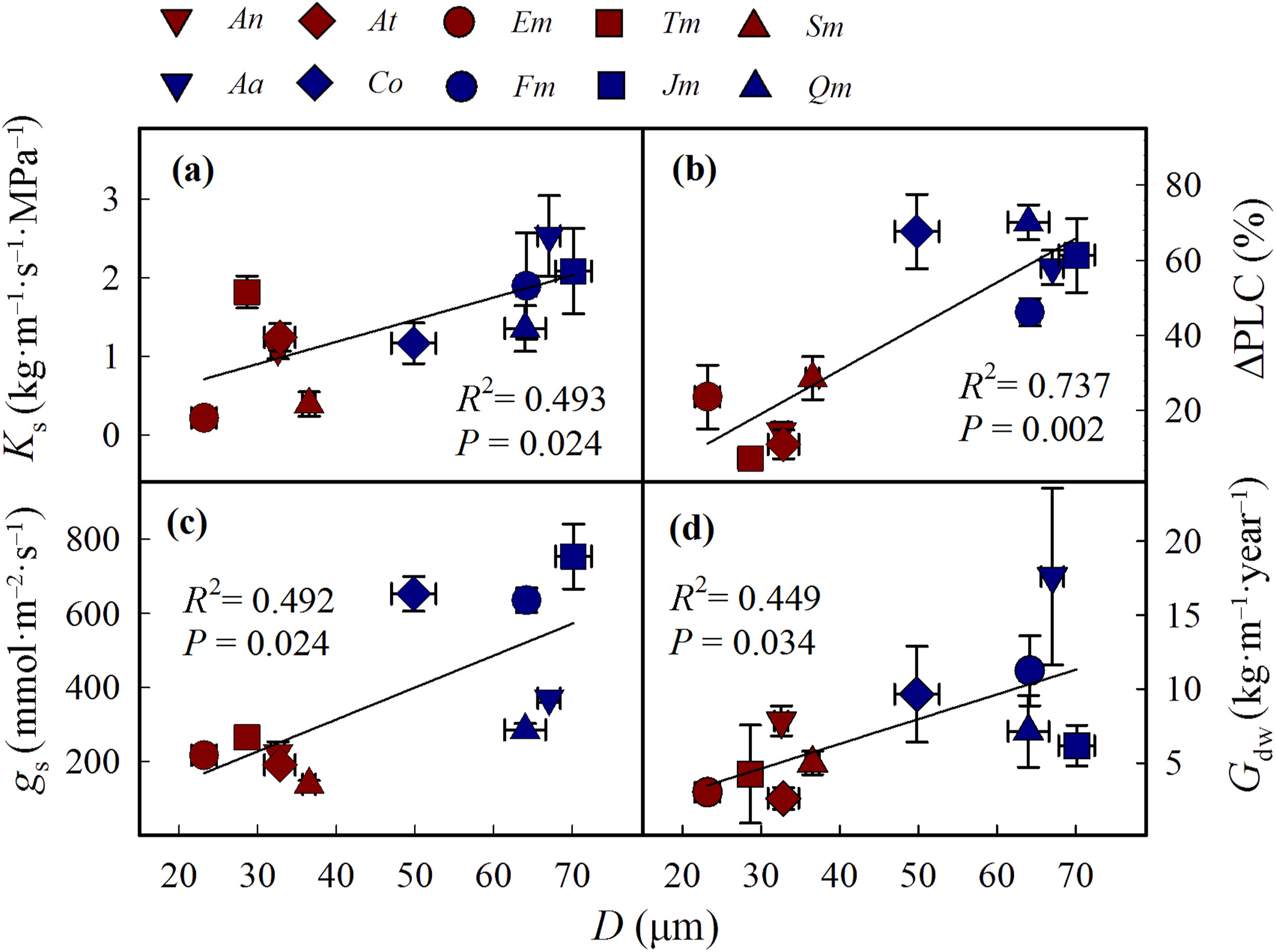
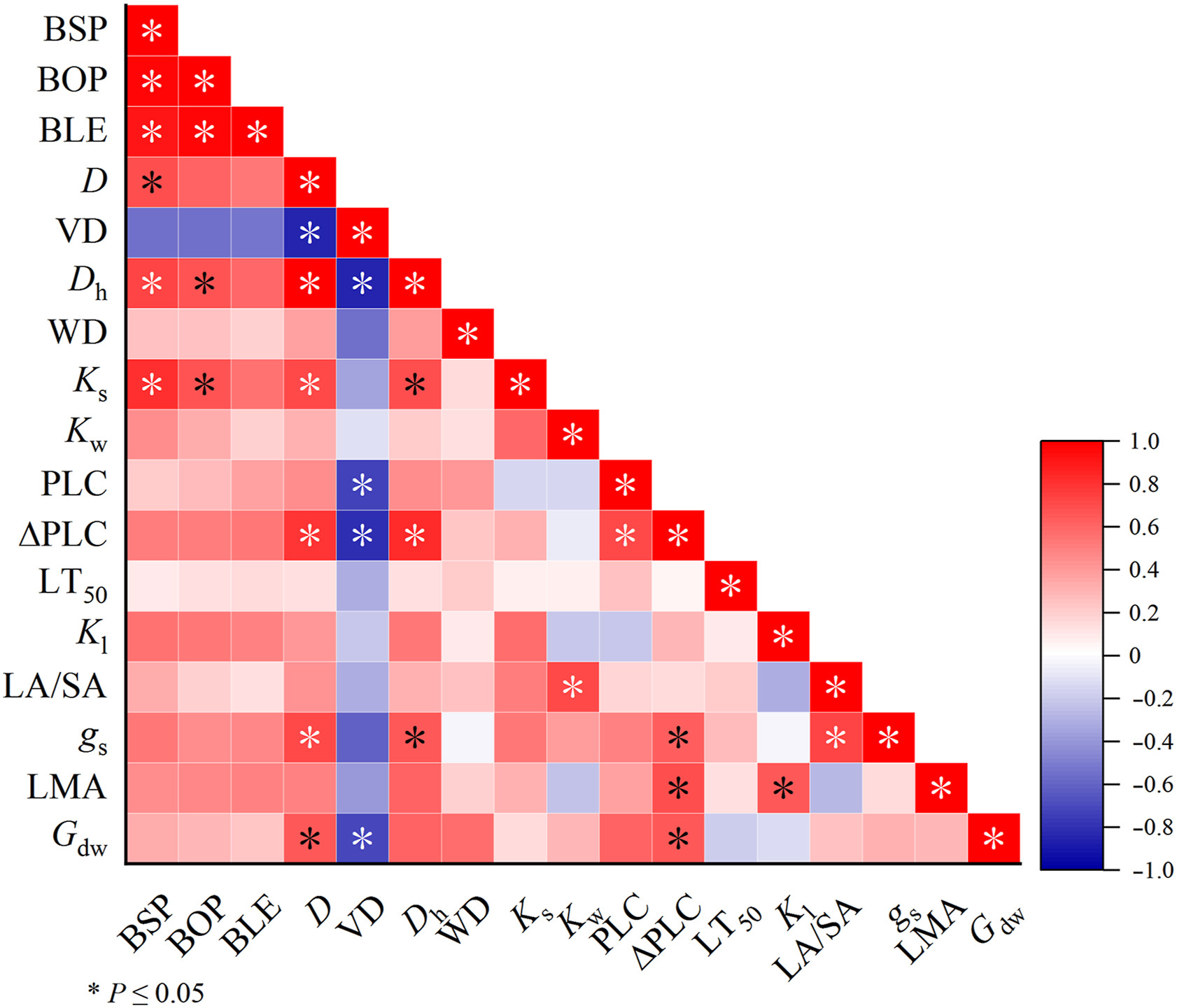
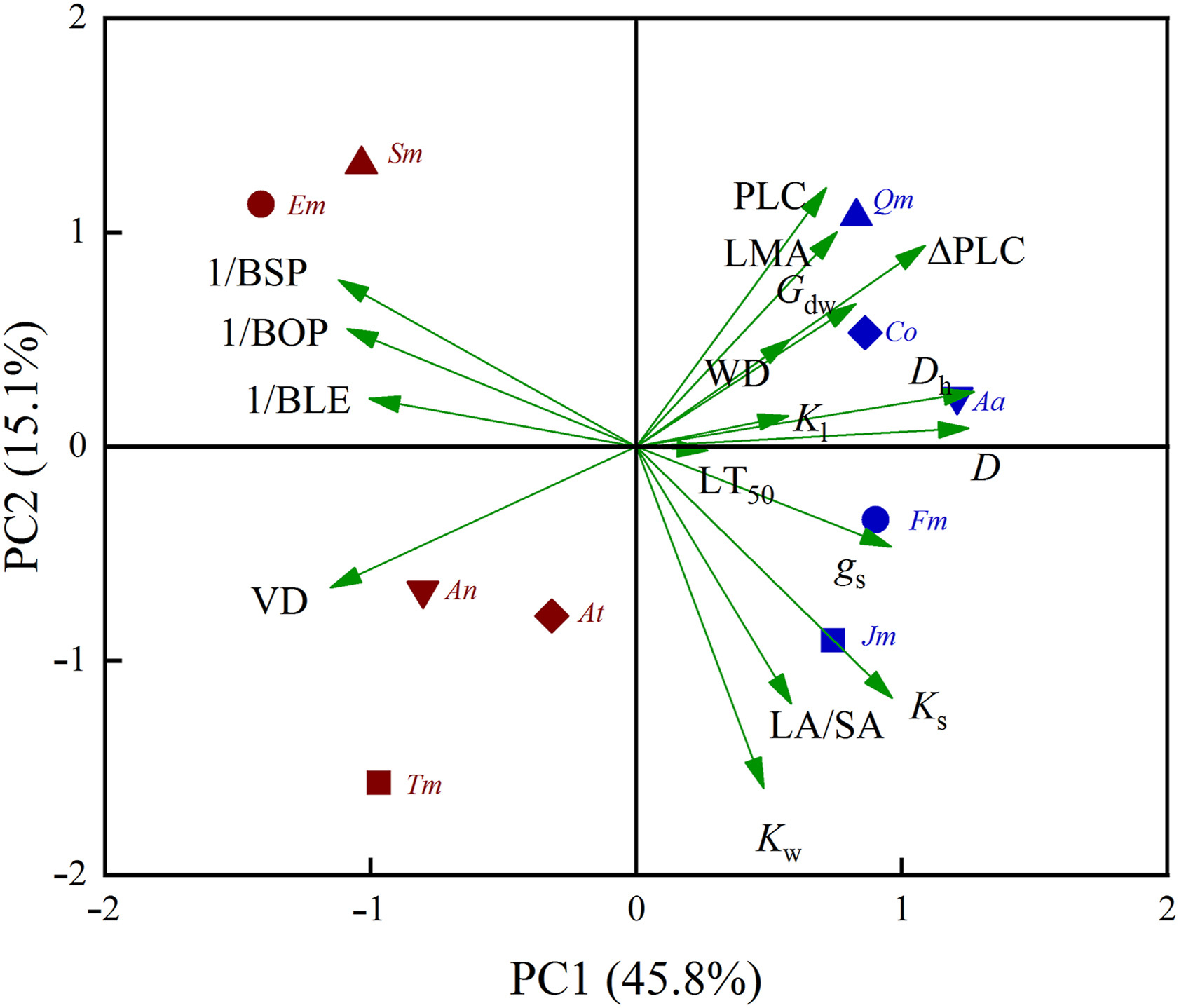





 Email Alerts
Email Alerts RSS Feeds
RSS Feeds